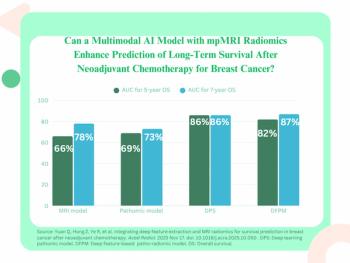
Study finds NSF more common than previously reported
Using clinical skin tests rather than biopsies for diagnosis, Massachusetts General Hospital researchers have found that nephrogenic systemic fibrosis struck 13% of all hemodialysis patients and 30% of hemodialysis patients who underwent gadolinium-enhanced MRI.
Using clinical skin tests rather than biopsies for diagnosis, Massachusetts General Hospital researchers have found that nephrogenic systemic fibrosis struck 13% of all hemodialysis patients and 30% of hemodialysis patients who underwent gadolinium-enhanced MRI.
Most studies have estimated a 2% to 5% incidence of NSF for high-risk patients after gadolinium exposure during MRI exams.
Dr. Jonathan Kay, clinical director of MGH's rheumatology unit, and colleagues studied hemodialysis patients at outpatient centers in the Boston area. They measured the patients' skin hyperpigmentation, hardening, and tethering to diagnose NSF. Patients were followed for two years. The study appeared in the October issue of Arthritis & Rheumatism, a Journal of the American College of Rheumatology.
Twenty-five (13%) of 186 dialysis patients had skin changes associated with NSF. The researchers examined effects of exposure to gadolinium in 90 patients for whom electronic medical data were available. (The agent Magnevist was used in all cases.)
Electronic medical records were available for 17 of the 25 positive cases and 73 of those who tested negative for NSF. Sixteen of those 17 positive cases had been exposed to gadolinium. Of 54 cases of exposure in the subcohort group of 90 patients, the 16 positive cases equates to an incidence of 30%.
"Our study suggests that NSF, a complication of renal failure that has emerged over the past decade, is prevalent. Although seemingly under-recognized, NSF appears to be an emerging epidemic in patients receiving hemodialysis," Kay said.
These rates are much higher than previously reported and could indicate a broader definition of NSF. In a large Scottish study published this month, for example, 0.77% of the overall dialysis patient population and 3.1% of those who had gadolinium-enhanced MRI developed NSF, based on clinical and pathology findings (Radiology 2007;245;1:168-175).
Dr. Shawn Cowper at Yale University and other experts have stressed the need for biopsy proof of NSF, but Kay and the MGH group deemed biopsy too risky, given degraded the health of the hemodialysis patients, who are more vulnerable to surgical complications.
Clinical testing also enhanced study participation, according to the MGH group.
"By not requiring a skin biopsy, we were able to achieve a 94% participation rate and to minimize selection bias," Kay said.
In the MGH study, patients who had at least two abnormal findings on the skin exam were four times more likely to die within six months than patients with one or no abnormal skin findings. Mortality rates were 48% for those with NSF skin changes and 20% for those without them.
"In patients receiving hemodialysis, NSF is an under-recognized disorder associated with increased mortality," Kay said.
Cowper noted in an accompanying editorial that the purely clinical criteria used in the MGH study may explain the high incidence of NSF-like skin changes in the patient population. He wrote, however, that the trial still raises the possibility that reactive NSF-like skin changes may be more common in this patient group than previously thought. The results also could be indicative of an early or less severe form of NSF.
"These findings, if confirmed by a biopsy-proven study, will undoubtedly heighten concern about the risk of exposure to gadolinium-based MR contrast agents in dialysis patients and perhaps in patients with more mild renal insufficiency," he said.
For more information from the Diagnostic Imaging archives:
Newsletter
Stay at the forefront of radiology with the Diagnostic Imaging newsletter, delivering the latest news, clinical insights, and imaging advancements for today’s radiologists.




























